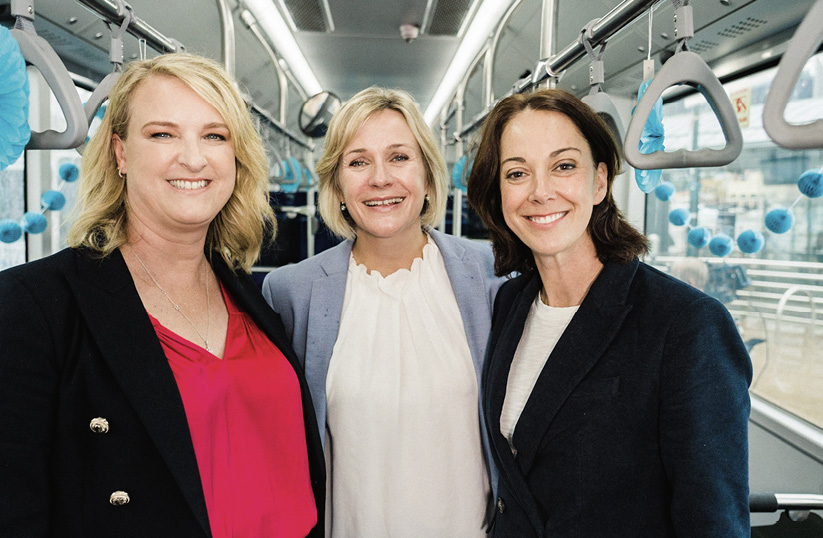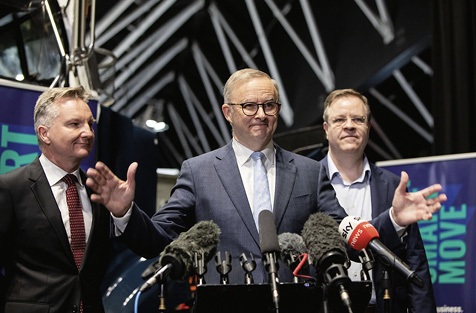From pv magazine 06/2022
For a country where politics has long been the domain of two male-dominated parties, Australia’s May election is a tectonic shift. Labeled a “greenslide” and a “teal” wave – a term originating from the independent candidates’ green slant – the result demonstrated the groundswell desire for climate action.
While the main centre-left party, Labor, just managed to scrape into majority government, it had the lowest primary vote in its history. This shaky ground appears not to be lost on its leader, Anthony Albanese, who ran on a platform of modest climate reform only to spend his first fortnight as prime minister loudly vowing to turn Australia into a “renewable superpower” and committing to 2030 emissions reduction targets, albeit of only 43%.
“The window of orthodox opinion mostly changes gradually but then sometimes there are step changes, and I think there was a step change on [May 21],” Simon Holmes à Court, founder of fundraising and advisory group Climate200 told pv magazine. “All of a sudden, Labor can talk about Australia being a clean energy superpower because the Australian people gave them a mandate and strong crossbench support in the House and the Senate.”
Ahead of its ascension to power, Labor laid out policies to boost the uptake of electric vehicles through tax breaks, rollout community batteries and shared “solar banks,” and improve energy efficiency. Its hallmark policy though is to invest AUD 20 billion ($14.4 billion) in new electricity transmission infrastructure, thereby unlocking the country’s renewable energy potential.
Under the plan, renewables are expected to make up around 82% of the National Electricity Market by 2030, a scenario industry agrees is Australia’s most likely future route. A big step up from the previous government’s ambition, such policies pale alongside Australia’s global peers and fall short of the Paris agreement to keep warming below 2 C. The incoming federal energy minister said he won’t be negotiating policies with the more ambitious independents nor the growing Greens party that are seeking 2030 reductions of 60% and 75% respectively, but such stubbornness seems ill advised.
In this election, independent candidates almost tripled their presence in parliament, turning Sydney’s harbour suburbs teal and taking swaths of Melbourne. Meanwhile, the Greens, an established minor party with an environmental focus, flipped the historically conservative Queensland capital of Brisbane, winning three inner-city seats for the first time. With its best result on record, the Greens now hold the balance of power in the Senate. Not one of the outgoing government’s seats fell to right wing parties or candidates.
Given this embrace of candidates outside the political establishment, Labor’s success may hinge on its ability to work cooperatively to take decisive action.
“They may not have the balance of power this time, but unless both major parties do something very different in the next three years, the current trend will see … independents with the clear balance of power,” journalist and analyst Alan Kohler wrote. And Kohler isn’t alone in predicting an end to Australia’s two-party system.
Why it happened
On top of the pandemic, the last three years have seen Australia spend a summer in eerie orange bushfire smoke, followed by months of rain which delivered two “once in a thousand-years” floods in the span of four weeks. These events changed Australia fundamentally. The economy lost its sacrosanctity and the political playbook which long stymied climate progress was rendered impotent.
Beyond the environmental impact on the collective psyche, Covid-19 related lockdowns shifted electoral demographics. Lockdowns moved people from city to country and kept young people at home.
These transformations were not lost on the ‘teal’ independents nor the Greens, which both mobilised tens of thousands of volunteers, running hyper local campaigns based on community interaction. In Brisbane, Greens members even suspended campaigning when the floods hit, diverting volunteers to clean up homes.
“We are witnessing a step change in politics and we will keep proceeding to really spread the politics of humanity, of care – of care for the future, of care for the planet and of care for people … and I think once people get a taste of it, they absolutely want more,” incoming Greens MP, architect Elizabeth Watson-Brown, told pv magazine. She enjoyed an 11% swing towards her in a Brisbane seat held almost uninterrupted by conservatives.
On the backend, groups like Climate200 devoted resources to understanding electorates actual, rather than historical, community makeup. Holmes à Court describes Climate200 as a “democracy movement,” crowdfunding AUD 12.5 million from 11,000 donors. It translated that money (a fraction of what was spent by the major parties) into wins for seven of the 23 candidates it supported.
Holmes à Court is adamant Climate200 only accelerated, rather than germinated, this political movement. “One thing I cannot say enough is that the community independents movement is much, much bigger than Climate200, it started long before us,” he told pv magazine.

No-nonsense women
Independent Zali Steggall, an Olympian and barrister who unseated a former conservative prime minister in 2019, has been described as a “lighthouse” for the independent movement, something unimaginable until seen. Commanding a high profile in her first term, Steggall proved the worthiness of parliamentarians without party affiliation, owning the brand of “no nonsense woman” – a retort to the so-called “good bloke” figures which have dominated Australian politics until now.
Reading the room, Labor named 10 women to head its 22 cabinet positions, bringing gender parity to Australia’s front bench for the first time. Many of the new “teals,” who like Steggall are mothers in their early forties to fifties, campaigned on supporting her Climate Change bills, which were modelled on the UK Climate Change Act. They are more comprehensive than Labor’s offering and while Steggall is committed to pushing for the policy suite, she points out “this is not an ego trip.
“I don’t care whose bill is actually done, what I want to see is the effect,” Steggall told pv magazine. “So the effect is we legislate net zero by 2050 and a mechanism by which that can be brought forward on the recommendation of science. Then we have a clear pathway there, that all sectors from business to industry can understand. Having the five-year emissions reduction budgets is a key component of a clear roadmap to net zero.”

Changing opportunities
The prospects for renewable investment will certainly change as a result of the election. “This is putting Australia back on the map,” said David Scaysbrook, co-founder of energy investment firm Quinbrook Infrastructure Partners.
As a further testament to the tide’s turn, AGL – Australia’s largest and most fossil fuel reliant electricity generator and retailer – has been forced to abandon its much publicised demerger. After two unsuccessful bids to buy the company earlier this year, technology billionaire Mike Cannon-Brookes purchased an 11% stake in Australia’s electricity giant and successfully campaigned to stop the corporate strategy he deemed “dodgy” and “value destructive.” AGL’s chairman and CEO promptly departed following the defeat, leaving Australia’s chief electricity provider in very public turmoil.
While Holmes à Court is delighted by the election, he’s also cautious, cognisant of the potential backlash from fossil fuel industries which in fiscal 2021 enjoyed $10.5 billion in subsidies from the former government.
“It’s wonderful that we have this massive change, but brace yourself for an equal and opposite reaction,” Holmes à Court said. “You can’t introduce a foreign body – the teal candidates and the green wave – into a massive organism – a two party system compromised by fossil fuel interests – and not get a strong immune system response.”
“If this new government, with its strong mandate, can survive the remnants of the forces that have held us back for so long, then Australia stands to play a major role in this new era of global decarbonisation. Not just our energy, but our critical minerals.” Here’s hoping. 
This content is protected by copyright and may not be reused. If you want to cooperate with us and would like to reuse some of our content, please contact: editors@pv-magazine.com.









3 comments
By submitting this form you agree to pv magazine using your data for the purposes of publishing your comment.
Your personal data will only be disclosed or otherwise transmitted to third parties for the purposes of spam filtering or if this is necessary for technical maintenance of the website. Any other transfer to third parties will not take place unless this is justified on the basis of applicable data protection regulations or if pv magazine is legally obliged to do so.
You may revoke this consent at any time with effect for the future, in which case your personal data will be deleted immediately. Otherwise, your data will be deleted if pv magazine has processed your request or the purpose of data storage is fulfilled.
Further information on data privacy can be found in our Data Protection Policy.